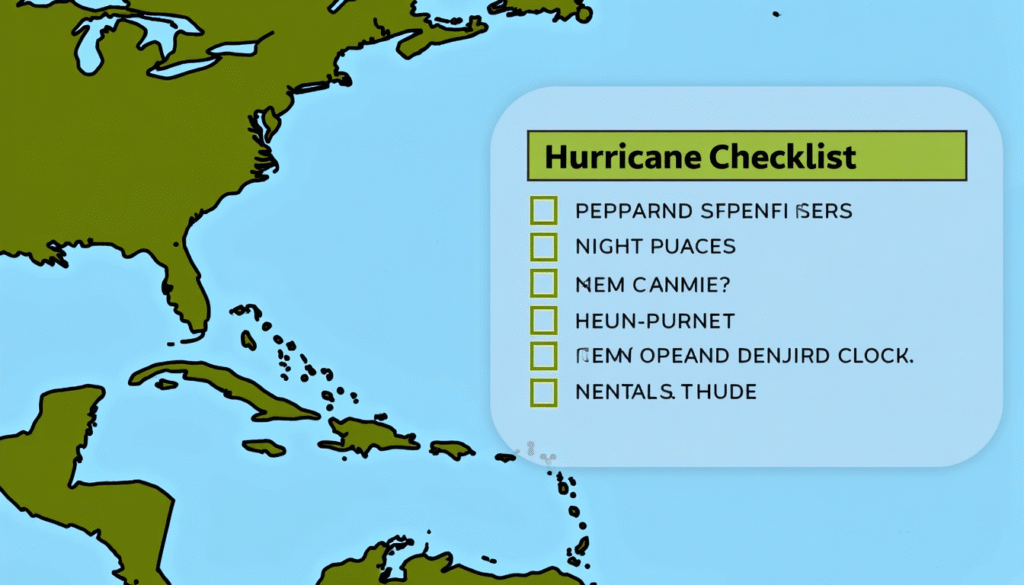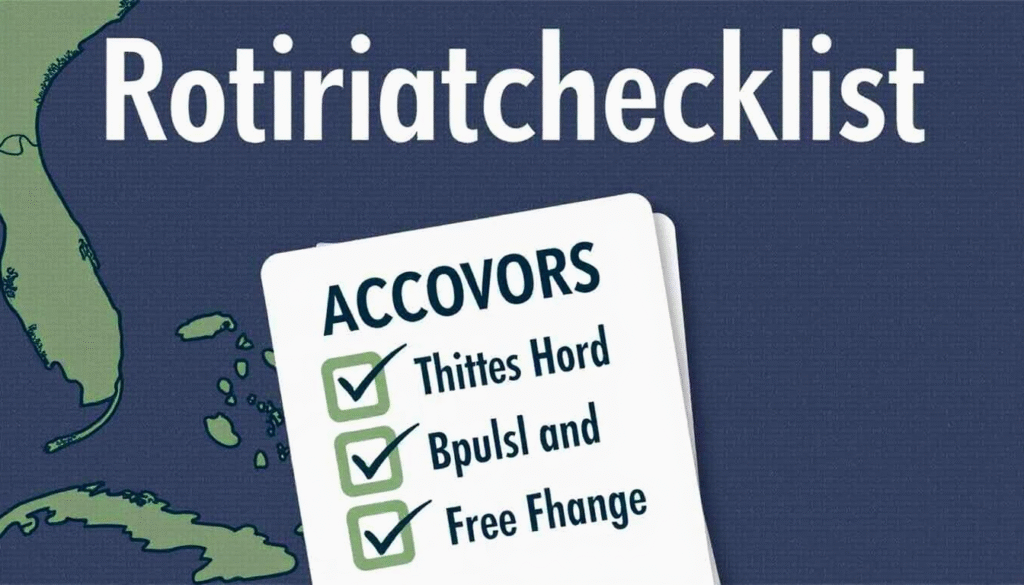Ultimate Emergency Preparedness Guide
Hurricane Checklist: Emergencies and disasters can strike without warning—natural disasters, severe storms, fires, health crises, and more are unpredictable but inevitable. A well-developed emergency preparedness plan is the foundation for protecting yourself, your family, and your community.
This comprehensive guide is your trusted resource for creating a resilient strategy, complete with checklists, real-world tips, and live tools. You’ll find direct links to both foundational resources and live weather updates, combining expert advice with actionable steps tailored for real-world needs.

Everything You Need to Know: Emergency Kits, Communication, Evacuation & Real-Time Weather Alerts
Featured Internal Resources
1. The Fundamentals of Emergency Preparedness
Why Prepare?
Preparation saves lives. Disasters disrupt supply chains, communication, and daily routines. Quick action, guided by a well-practiced plan, can reduce risks, minimize losses, and prevent panic.
The Three Core Pillars
- Build an emergency supply kit: Stock essential items for at least 72 hours.
- Develop a communication plan: Be sure you can reach loved ones and emergency services, even if technology fails.
- Create an evacuation plan: Know where to go, how to get there, and what to bring if you must leave in a hurry.
2. Building Your Emergency Supply Kit
A comprehensive emergency supply kit is the cornerstone of disaster readiness. Everything should be portable, accessible, and regularly updated. For a full checklist, consult the Emergency Supply Kit List and supplement with resources from Ready.gov or FEMA.
Core Items for Every Kit
- Water: 1 gallon per person, per day (minimum 3 days).
- Non-perishable food: At least a 3-day supply for each person.
- First aid kit: Include extra prescription medications, gloves, and medical instructions.
- Battery-powered or hand crank radio: Stay informed with NOAA alerts.
- Flashlight and extra batteries
- Whistle: Signal for help.
- Local maps and compass
- Personal sanitation: Moist towelettes, garbage bags, and plastic ties.
- Multipurpose tool or wrench: To turn off utilities if necessary.
- Manual can opener
- Cell phone chargers and backup batteries
For advanced needs (babies, pets, adult), see the CDC emergency kit guide.
Where to Store Kits
- Home: In an accessible, marked location known to all family members.
- Work: Prepare for a 24-hour stay with comfort and necessities in a portable bag.
- Vehicle: Include a blanket, jumper cables, flashlight, and road maps.
Regularly review and refill your kit, replacing expired food, water, and medication.
3. Crafting an Effective Communication Plan
Communication failures are a common danger during emergencies. That’s why a robust communication plan is as important as food or water. Access an editable template and strategies at Communication Plan or review guidance from the Red Cross.

Key Elements of a Family Emergency Communication Plan
- Emergency contact cards: Distribute to all family members—include at least one out-of-town contact.
- Meeting places: Establish local and out-of-area meeting points in case you’re separated.
- Contact chain: Who contacts whom? Make a clear order for relaying information.
- Communication hubs: Choose a messaging app and/or a group SMS system all family members can use.
- Paper backups: Print copies of your plan and keep in your wallet, emergency kit, and car.
Communication Plan for Pets & Disabled
- Include pet-friendly hotels or friends outside your area.
- Consider plans for older person, disabled family members, or those needing medical devices.
For a full downloadable plan and additional examples, reference the American Red Cross emergency plan page and Ready.gov’s printable form.
4. Developing an Evacuation Plan
Disaster may force you to leave your home with little warning. Preparation beforehand is critical. Explore detailed strategies and customizable templates at the Evacuation Planning Guide, backed by practical insights from the MEND Guide.
Steps for a Successful Evacuation Plan
- Identify exits: Know all exits in your home, building, and workplace.
- Plan routes: Map out multiple routes in case roads are flooded or blocked.
- Designate meeting points: One near home, another farther away.
- Transportation: Arrange how you’ll evacuate if you don’t have a car.
- Practice evacuations: Run drills for all scenarios—fire, storm, chemical spill.
- Pet plans: Pet carriers, leashes, food, water, and medications.
Visit Ready.gov’s evacuation planning for additional checklists and federal requirements.
Special Considerations
- Prepare for local hazards (wildfires, hurricanes, floods): Know community warning signals and evacuation locations.
- Keep important documents in a waterproof portable container.
5. Receiving Real-Time Alerts & Weather Updates
Staying updated saves lives. Live weather and emergency alerts inform you when evacuation, shelter, or action is necessary. Bookmark Weather Updates for local forecasts and warning details.
Key Tools for Live Emergency Alerts
- National Weather Service Active Alerts: Browse current warnings for all regions in the United States.
- FEMA App: Real-time alerts, shelter info, and customizable notifications.
- Red Cross Emergency: Severe Weather App: Personalized weather alerts and shelter locations.
- Weather Channel: Local and national forecasts, radar, and severe storm tracking.
- Global Multi-Hazard Alert System (WMO): Authoritative worldwide weather warnings.
Set up notifications for your hometown and for locations where loved ones live. Make use of NOAA Weather Radio for continuous local updates, especially if internet and phone lines are down.
6. Practicing and Maintaining Your Plan
Don’t let your emergency plan gather dust—practice and update it regularly!
- Schedule family drills twice a year.
- Update contact info, health documents, and kit contents every 6 months.
- Review evacuation routes for current construction or road closures.
- Encourage children to participate and ask questions.

7. Advanced Tips for a Resilient Community
- Connect with neighbors: Form a neighborhood watch or alert system for vulnerable populations.
- Join CERT or Red Cross training: Gain skills in first aid, search and rescue, or disaster response.
- Backup power: Consider home generators or power banks for essential medical devices.
8. Additional Resources & Live Tools
Internal:
Essential External Resources:
- Ready.gov – Official FEMA Disaster Hub
- FEMA: How to Build a Kit for Emergencies
- American Red Cross Disaster Preparedness
- CDC Emergency Supply Kit Guide
- National Weather Service Warnings
- Weather Channel Global Forecasts
- FEMA App: Real-Time Mobile Alerts
- WMO Global Multi-hazard Alert System
- Red Cross Emergency Weather App
Take Action Now:
Review your kit, update your plans, download essential apps, and share this guide with your loved ones. Preparedness is a shared responsibility—act today to protect your future!
